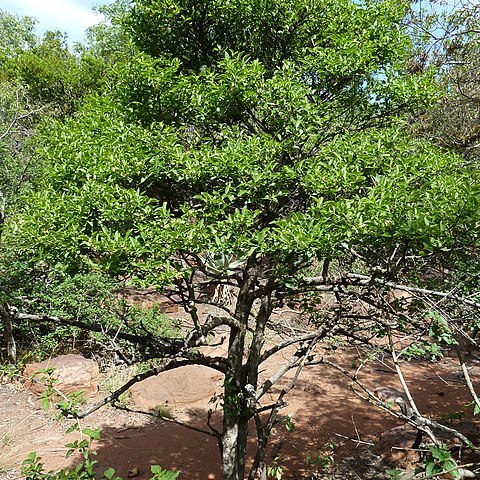Leaves restricted to young stems, or occasionally on older stems, not always fully mature at time of flowering; blades 1.5–13 × 1–7 cm, narrowly ovate to ovate or occasionally broadly ovate, acute to subacuminate or sometimes acuminate or obtuse to rounded at apex, obtuse to rounded or sometimes acute at the base, herbaceous, dull to slightly shiny on upper surface, glabrous to densely pubescent on both surfaces; lateral nerves in 4–5 main pairs; tertiary nerves apparent; domatia present as ciliate membranous pockets; petioles 2–5(10) mm long; stipules 4–7 mm long, triangular-acuminate with lobe eventually decurrent.
Tree or shrub, up to 4 m high. Leaves deciduous, leaf blades 15-130 mm long, base obtuse to rounded or rarely subcordate, chartaceous to subcoriaceous, dull above, pubescent or glabrous, lateral nerves in 3-5 main pairs. Stipules triangular, acuminate. Inflorescence clearly pedunculate. Corolla lobes 1.25-2.00 mm long. Fruit ovate, scarcely indented at apex. Flowers white.
Flowers 4-merous, borne on 6–70-flowered pedunculate compact corymbs; peduncle 3–15 mm long, pubescent; inflorescence branches proportionately short, not spreading; pedicels 3–10(15) mm long, pubescent; bracts and bracteoles inconspicuous.
Corolla greenish-white (or yellow); tube 1.25–3 mm long, pubescent at throat but without a well defined ring of deflexed hairs; lobes 1.25–2 × 1–1.5 mm long, oblong, obtuse to rounded.
Shrub or small tree 0.8–8 m tall; green twigs glabrescent to densely pubescent; older stems at first covered with pale tissue-like bark which flakes off to reveal a darker underlayer.
Calyx tube 1 mm long, broader than long, pubescent or glabrous save for a few hairs towards the base; limb 0.5 mm long, irregularly dentate, ciliate.
Fruit 5–6 × 7.5– 8 mm, broadly oblong in outline, not or scarcely indented at the apex, black when mature.
Pollen presenter 1 × 0.5 mm long, obscurely ribbed; disk glabrous.
Pyrene 5–6 × 3.5 mm, ± ellipsoid, rugulose.
Style up to 6 mm long.
Anthers reflexed.

